
HOLDEN Commodore Sedan
Generations Timeline, Specs and Pictures
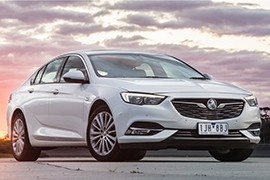
Holden Commodore is a medium to large sedan and was first produced in 1978.
Today’s version of the Holden Commodore comes with two gasoline engines, one that has a displacement of 2.0-liter developing 260 hp, the other with 3.6-liter of displacement with 320 hp, and one diesel engine of 2.0-liter developing 170 hp and a consumption of 42 mpg (5.6 L/100Km).
With the new software, Drive mode control continuously analyses the information through the sensors, optimizing the systems for the best traction and road position.
Inside, we find a cockpit defined by clean lines and modern surfaces with soft-feel materials, which creates a style of elegance and beauty. The Holden Commodore comes with a frameless touchscreen of the infotainment system. Although many functions are controlled through the touchscreen, the driver can make quick operations through the three clusters of buttons.
As for the exterior, the lower grille, the side window graphics with an upper chrome strip and the coupe-like roofline, make the car look slicker and more aerodynamic with a drag coefficient of 0.26. The center high-mounted LED stop lamp is now integrated into the roofline.
Furthermore, the brake dive can be reduced via the Sport button, a newly available feature, through which the driver can save personal preferences for the steering characteristics, and the throttle response time.
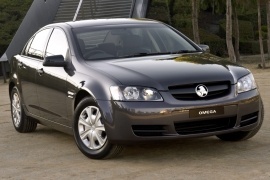
It was the first Holden Commodore that parted away with the European Opel/Vauxhall Omega, and it showed the muscles of the Australian engineering.
While its predecessors were developed on various Opel/Vauxhall models, the fourth generation of the Australian sports-sedan was designed by the Holden engineers in Australia. They didn’t want to adopt anything from Europe to their harsh environment.
It might be called a car designed by enthusiasts for enthusiasts and families. The latter was added to the engineering requirements just to make a profit out of the Commodore model. Its look was aggressive, with rounded panels that looked like they were about to explode under the inside pressure, and few hundred horses will be unleashed over the road. It was produced in Australia for the U.S. market, where it was sold as the Pontiac G8 while the U.K. received the Vauxhall VXR8 version.
The interior resembled some of the Opel design cues, such as the center stack with the three turning knobs for the HVAC system. The steering wheel and the instrument cluster were also inspired by the Opel/Vauxhall Vectra, which was still in production. Thanks to its big wheelbase, it offered good legroom for the rear seat passengers. For those who needed more, there was also an extended wheelbase version named Statesman/Caprice.
Under the hood, the Commodore was offered with two engines, with different power outputs. The base model, which was mainly built for the masses, was fitted with a 3.6-liter V6 unit. The top version was the SS with a 6.0-liter V8 engine paired to a 6-speed manual.
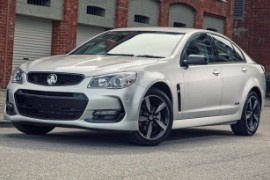
Holden introduced a new facelift for the Commodore’s fourth generation, bringing several exterior changes, depending on the trim level and interior updates, while the engine lineup was revised.
The Commodore nameplate was already 37 years old in 2015 when the carmaker introduced the second facelift for the VF series. Even though GM already announced that it would shut down Holden’s factory from Elizabeth, the carmaker didn’t drop the mike and quit. Its revenge was the last lineup that made more locals feel sorry for not buying them in larger numbers.
Depending on the version, the VFII Commodore sported a new front fascia. For the Redline level, the most powerful, a new aerodynamic kit allowed more cold air to get under the hood, while the side vents on the front apron diverted the airflow to the sides. On the hood, the carmaker installed real vents to release the hot air from the engine bay. For the Callais version, Holden kept the same front fascia as on its predecessor, but changed the taillights with clear, LED ones.
Inside, the cabin remained the same, but there was a small adjustment for the car’s settings. The SS model received a bimodal system that allowed a louder, deeper sound for the exhaust. Due to it, the exhaust sent 10 more dB into the cabin.
Under the hood, the most important modification was the introduction of the LS3, 6.2-liter engine that replaced the previously used 6.0-liter unit. The power went up from 367 hp to 413 hp and dropped the 0 to 100 kph (0-62 mph) time under five seconds for the manual version, while the automatic one got there in five seconds flat.

The 2013 Holden Commodore Sedan was the facelifted version of the fourth generation of the Australian large vehicle.
The refresh brought a decrease in its base price and added more features.
The new model was updated with safety features and better engines. It was the last Commodore based on a rear-wheel-drive platform, the GM Zeta. After that, it was based on the same platform with the European Opel Insignia and the American Buick Regal. It was the last Commodore to have a V8 engine.
The exterior look was upgraded with a new design for the grille, headlights and the front bumper. Even in the lowest spec version, the Evoke received a sportier look for the bumper, with a wide and short air intake in the middle and two other on it sides. Behind the front wheels, there was an air-extracting scoop for the wheel well. It was equipped with standard 16” alloy wheels.
Inside, the Commodore was loaded with features such as an 8” display for the infotainment system. It had Bluetooth connectivity and navigation. It also featured a parallel parking system that could spot and turn the wheels to help to park.
There were three engine choices and two gearboxes available for the 2013 Holden Commodore. There were two V6s on the offer and a V8. The 6-speed manual was fitted as standard on all the models while the 6-speed automatic was an option.
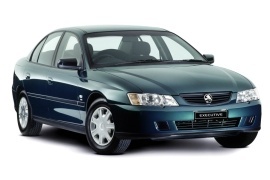
Holden introduced another facelift for the Commodore lineup in 2004, introducing new engines and a restyled look.
Known as the Commodore VZ, the 2004 model was the third facelift brought by the Australian carmaker to its mid-size sedan lineup. Unlike other carmakers, Holden split its sedan range into seven trim levels: Executive, Acclaim, Berlina, Calais, SV6, SV8, and SS, with differences between engines and interior equipment. Above the Commodore, but on the same platform, the carmaker built the Caprice/Statesman lineup with a longer wheelbase.
On the outside, the VZ featured a new front fascia with a more aggressive styling and angular-shaped headlights. Its wrapped-around front bumper sported a lower grille to help to cool the engine and two fake side-scoops for fog lights if fitted. Like most of the facelifts, the VZ featured new taillights, but different depending on the trim level.
Inside, Holden offered bucket seats at the front and a flat bench in the rear, fit for three, but with a tall center tunnel. There were not too many noticeable changes on the rounded instrument cluster, which was very similar to its previous model. GM considered that if the customers didn’t complain, it didn’t have to fix it. A new, Blaupunkt sound system was offered as an option.
Under the hood, Holden installed a 238 hp V-6 engine for the base version, with variable valve timing for the exhaust only. For selected powerplants, the carmaker installed a new, five-speed automatic gearbox.
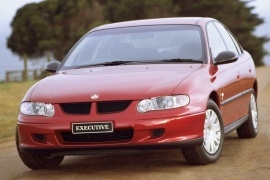
As part of General Motors, Holden received a European platform for the well-known nameplate Commodore and adapted it for the Australian market.
The 1997 Commodore was based on the European Opel/Vauxhall Omega. Cadillac built the Catera on the same platform, but for the U.S. market, it didn’t work that well. Cadillac should have listened to the Holden and get that version instead.
Its rounded shapes with the curved roofline and a split-grille at the front were just a few distinct elements for the ‘97 Commodore Sedan. While it was a medium-big vehicle for the European customers, it was just a regular family sedan built better for the Australians. Its rounded but angled headlights offered an aggressive look. Holden’s engineers refined the rear part of the car and improved its aerodynamic.
Inside, the Commodore was large enough for five adults, with good legroom for all of them despite the tall transmission tunnel. It was the hip-area that prevented three passengers from sitting on the rear bench. Holden carried over the dashboard and instrument cluster from the Vauxhall Omega. The Australian carmaker was quite successful with this VT generation of the Commodore, and it was the base vehicle for future models, including utility vehicles and Police interceptors.
Unlike its European or British siblings, Holden invested in the new platform and made it more suitable for the harsh Australian environment. Its engine ranged from a 3.8-liter V-6 to an LS1 Chevrolet V-8 engine.























































